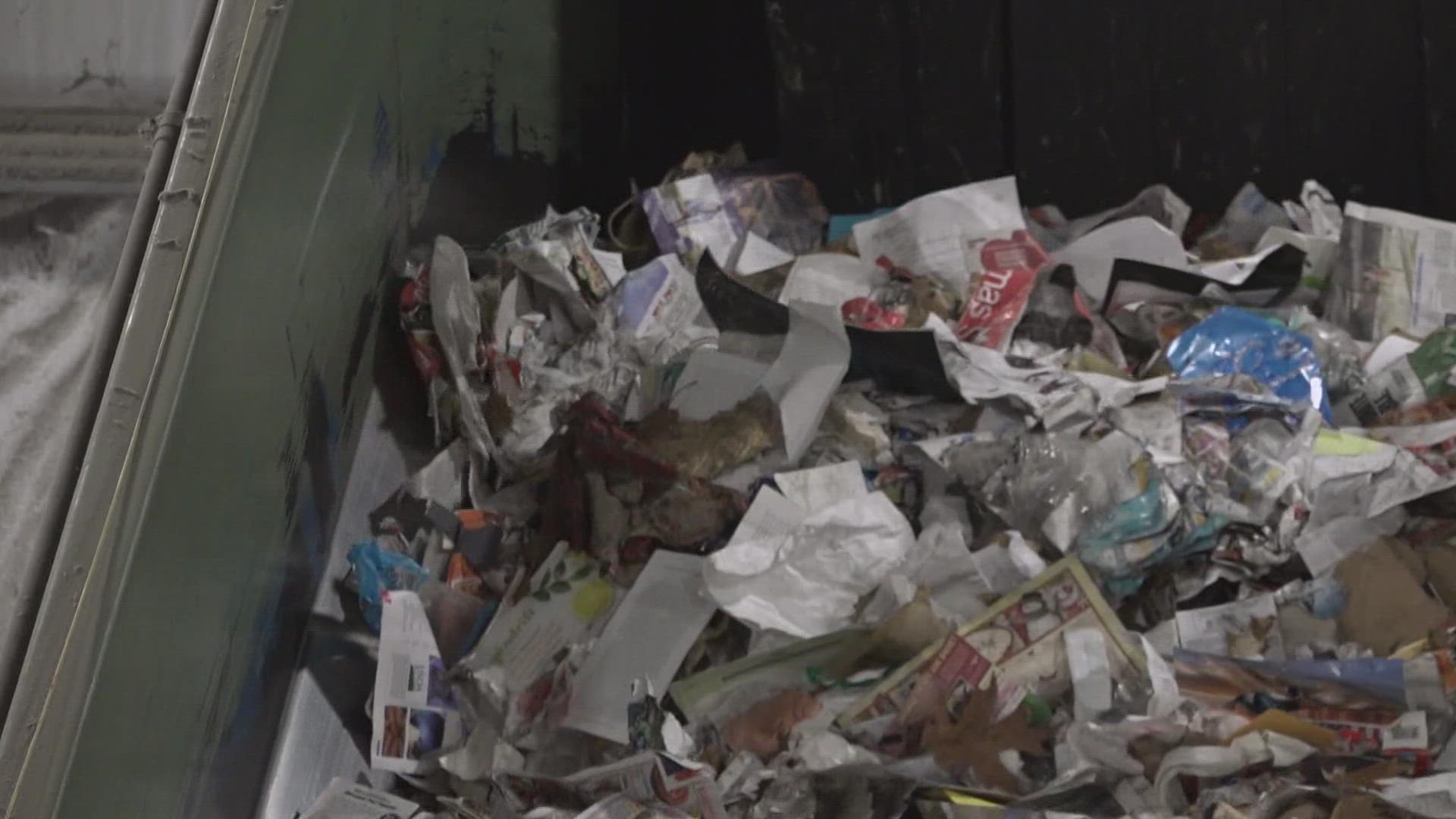PORTLAND, Maine — A new report from the Maine Department of Environmental Protection indicates more waste went to landfills during the pandemic. The state also has yet to reach its recycling goals, set more than three decades ago.
In 1989, landmark solid waste legislation in Maine created a goal of recycling and composting 50 percent of waste per year by a certain date. Since then, the target date has continued to get pushed forward. There's no penalty for the state not meeting that recycling rate.
"It’s a trend that we’re not particularly surprised by, unfortunately," Matt Grondin, the director of communications and public affairs for ecomaine said.
Ecomaine serves 73 communities and gives a new purpose to cardboard, glass, metal, paper, and plastic. Grondin said the facility sees about 35,000 tons of recycling come through the building per year, which amounts to about 15 tons per hour.
"It really is important to think about recycling and waste in a more mindful way because these materials have value," Grondin said. "We’re recycling because the manufacturing supply chain needs these materials."
Grondin also warned that choosing not to recycle eligible materials will have consequences.
"As landfills continue to fill up, we’re going to run out of space," Grondin said.
The Maine DEP's most recent Municipal Recycling Progress Report found 903,660 tons of trash went to our state's landfills in 2021, compared to 721,646 tons in 2017. It also found the estimated recycling rate dropped from 38.1 percent in 2017 to 33.7 percent in 2021.
Sarah Nichols is the sustainable Maine director for the Natural Resources Council of Maine. She said the pandemic may have played a role in those numbers.
"I think that a lot more waste was being made in homes, and that’s going to our municipalities, and that’s where a lot of the numbers are being reported from," Nichols said.
Nichols said addressing this problem needs to happen at a larger level than just through individual households. It's why she said she's excited about the implementation of a new law called the Extended Producer Responsibility Program for Packaging.
Maine became the first state to pass a law like this in 2021. It will require large corporations to pay into a fund based on the amount and recyclability of packaging for their products. Those funds will reimburse local cities and towns for waste management costs.
"Right now, the state estimates that first payments to municipalities won’t happen until 2027," Nichols said.
Nichols said last year, our state passed another law to reduce the amount of out-of-state trash that goes into landfills in Maine. It also created a ban on single-use plastic bags and Styrofoam food containers. Nichols said she's hopeful for the future.
"I think by the end of the decade, these numbers are really going to start turning around," Nichols said.
In the meantime, progress could happen in the Bangor area even sooner. The Hampden waste facility that closed in May of 2020 is expected to reopen this fall, according to Michael Carroll, the executive director of the Municipal Review Committee.
"We are nine percent of the total waste in the state," Carroll said.
Carroll said in the past four months, the MRC has completed more than in the past two years. The MRC is hoping to close with its potential partner by the end of this month. Once it's up and running again, the facility will help divert up to 70 percent of recycling from the regular waste stream, turning it into a pulp.
"Their goal and their technology was to take more out of the waste stream and turn it into a reusable product, over and beyond what normal sorting of recycling is," Carroll said.
Nichols said this legislative session, she's introducing two bills to help bottle redemption facilities in Maine. More information will be available in the coming weeks.

